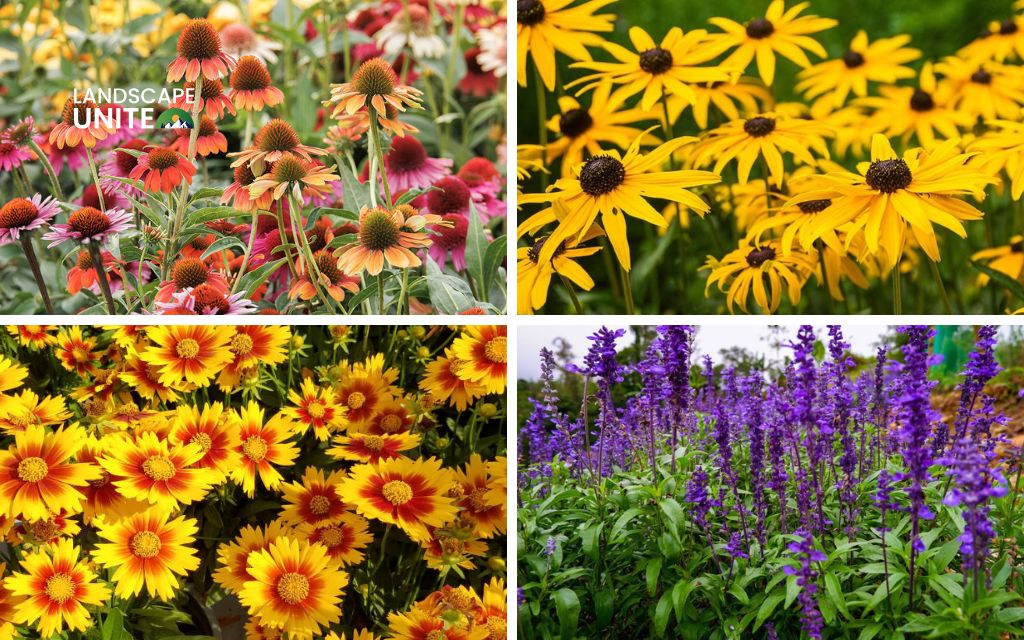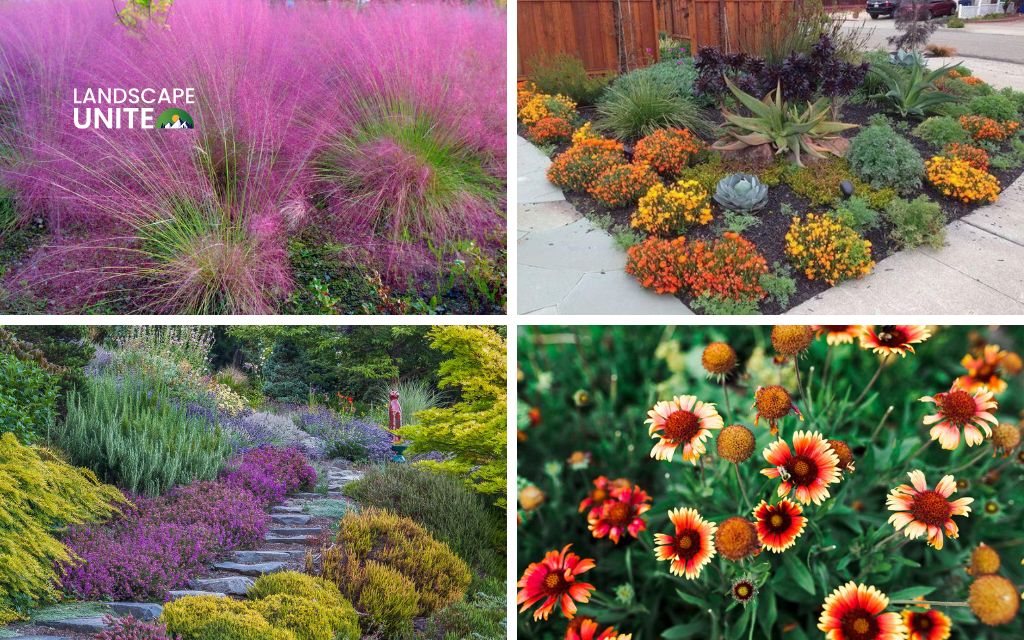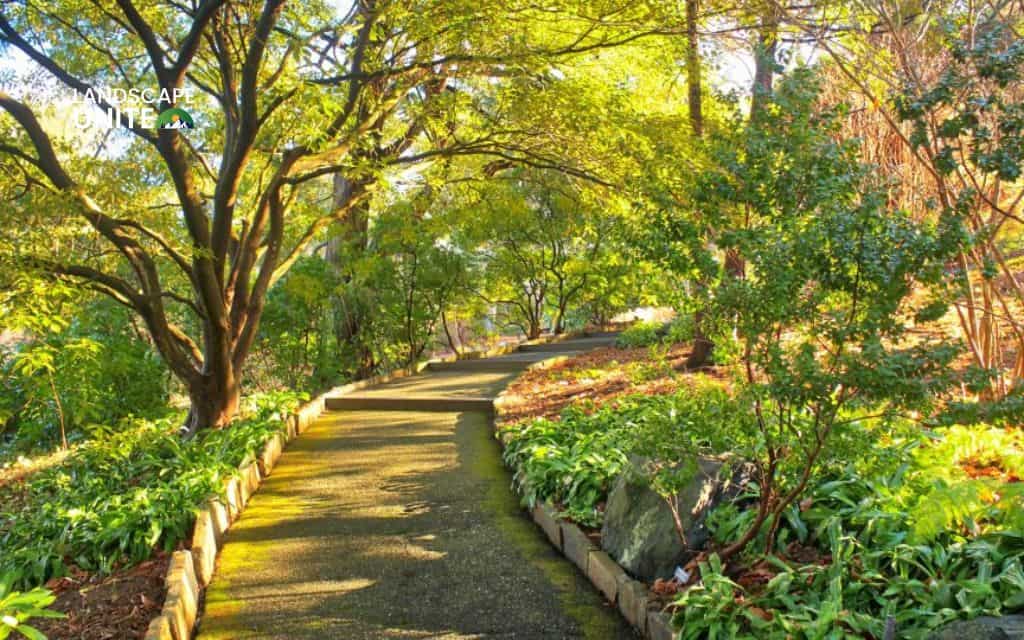Have you ever dreamed of a garden that returns more beautiful each spring without replanting every year? Flower beds with perennials make that dream a reality. These remarkable plants live and bloom for more than two years, coming back stronger season after season. Unlike annuals that require constant replacement, perennials are the foundation of American gardens that provide repeat color, structure, and endless creative possibilities.
Whether you’re transforming your front yard or creating a pollinator paradise, perennial flower beds deliver lasting beauty with far less effort. They use less water and fertilizer, support beneficial insects, and reward you with gorgeous blooms year after year. Ready to create stunning flower beds with perennials? Let’s dig in!
Why perennials are ideal for U.S. flower beds
Perennials have become foundational plants in American gardening for excellent reasons. These powerhouse plants return each season, establishing deeper root systems that access water and nutrients more efficiently than shallow-rooted annuals. After the initial investment, your flower beds with perennials continue delivering beauty without annual replanting expenses.

The ecological benefits make perennials even more appealing. They naturally attract pollinators like butterflies, bees, and hummingbirds, creating a living ecosystem in your yard. Their established root systems prevent soil erosion and require significantly less water once mature. You’ll spend less time watering, fertilizing, and replanting while enjoying more time relaxing in your beautiful garden.
Good perennials for flower beds simply go dormant in winter and reemerge when conditions are right. Many varieties even multiply over time, giving you more plants to expand your beds or share with friends. That’s sustainable gardening at its finest!
Designing your flower bed with perennials
Choosing top perennial varieties
Sun-loving champions:
- Coneflower (Echinacea): Daisy-like blooms in purple, pink, white, orange. Drought-tolerant, attracts butterflies, 2-4 feet tall
- Black-eyed Susan (Rudbeckia): Golden blooms with dark centers, summer through fall, native workhorse
- Coreopsis: Sunny yellow flowers for months, drought-tolerant, compact 1-2 feet
- Salvia: Vertical flower spikes in blues, purples, reds. Deer-resistant, pollinator magnet
- Lavender: Fragrant blooms, silvery foliage, excellent drainage required
Shade specialists:
- Hostas: Stunning foliage in all sizes, greens to blues to variegated patterns
- Phlox: Clusters of flowers in pinks, purples, whites. Garden phlox grows 3-4 feet, creeping varieties make groundcover perennials
Versatile performers:
- Geranium (hardy types): Delicate flowers, attractive foliage, low maintenance
- Ornamental grasses: Movement, texture, year-round structure from compact to towering
- Butterfly weed: Vibrant orange, yellow, or red clusters that monarchs adore

Layering for structure and season-long color
Creating flower beds with perennials that look amazing spring through fall requires strategic layering:
- Tall perennials (3-6 feet): Add vertical dimension and visual interest. Place in back of borders or center of island beds. Joe Pye weed, tall phlox, and ornamental grasses create privacy and serve as living backdrops. Some varieties bloom for months, providing cut flowers for arrangements.
- Mid-height perennials (18-36 inches): Your bed’s main body where coneflowers, black-eyed Susans, and salvia shine. Layer plants with different blooming schedules so as early bloomers fade, mid-season performers take over.
- Front-row perennials (6-18 inches): Groundcover perennials like creeping phlox or hardy geraniums soften edges, prevent weeds, and create polished looks.
Innovative combinations create magic traditional plantings can’t match. Pair delicate Whirling Butterflies with ornamental grasses for contrasting textures that dance in breezes. Some varieties like Baptisia produce unique seed pods that add interest even after flowering.
Native and drought-tolerant choices for sustainability
Sustainable flower beds with perennials use climate-adapted native species for lower maintenance and stronger ecosystem support. Drought-tolerant perennials for landscaping make particular sense across much of the U.S. Plants like prairie coneflower, butterfly weed, Russian sage, and sedum thrive with minimal supplemental watering once established.
This approach creates a “Flower Bed Sustainability Index” that quantifies both ecological and aesthetic success. High-scoring beds use primarily native or well-adapted species, require minimal inputs, support pollinators, and provide multi-season interest with reduced maintenance.
Soil prep and maintenance for perennial success
Soil preparation for perennial beds:
- Test soil to understand pH and nutrient levels (most prefer 6.0-7.0 pH)
- Add 2-4 inches of compost or aged manure before planting
- Work amendments into top 8-12 inches where roots establish
Mulching techniques for perennials:
- Apply 2-3 inches of organic mulch like shredded bark or wood chips
- Keep mulch a few inches away from stems to prevent rot
- Replenish annually as it decomposes
Ongoing care:
- Water deeply but infrequently (1 inch weekly once established)
- Divide plants every 3-5 years for vigor and free expansion plants
- Drip irrigation delivers water efficiently to root zones

Creative flower bed ideas and layout inspirations
Front yard show-stoppers for entry beds and borders
Your front yard creates first impressions. Perennial flower bed ideas for curb appeal start with understanding your space’s conditions. Foundation plantings benefit from evergreen perennials like hostas and hellebores near your home’s base, with coneflowers and daylilies adding seasonal color in front.
Border beds along driveways or sidewalks guide visitors while adding definition. Use repetition by planting drifts of 3-5 identical plants rather than singles. Repeat key plants at intervals for rhythm and unity.
Around trees, mailboxes, or paths with space-maximizing designs
Best perennials for shade flower beds thrive under deciduous trees. Hostas, astilbe, bleeding heart, and woodland phlox create gorgeous understory gardens. Mailbox beds transform functional necessities into focal points with compact varieties like daylilies, coreopsis, and catmint.
Pathway plantings guide movement while softening hard edges. Line walkways with fragrant options like lavender or catmint that release scent when brushed.
Cottage, xeriscape, pollinator-friendly styles
- Cottage style: Charming, informal abundance with roses, hollyhocks, delphiniums, phlox, and foxgloves. Looks best slightly overgrown rather than rigidly controlled.
- Xeriscape designs: Agastache, Russian sage, yucca, and sedum create stunning displays with minimal water. Use decorative rock mulch and ornamental grasses.
- Pollinator-friendly perennial plants: Choose native plants whenever possible. Plant in drifts for efficient foraging. Asters, coneflowers, bee balm, and butterfly weed create irresistible pollinator buffets.
Common challenges and solutions for perennial beds
Managing pests and disease naturally
Proper plant selection and placement prevent most issues. Choose disease-resistant varieties and provide adequate spacing for air circulation. Strong water sprays dislodge aphids and mites. Handpick larger pests in small infestations.
Deer and rabbits present bigger challenges. Without fencing, choose naturally deer-resistant perennials like salvia, catmint, lavender, yarrow, and ornamental onions.
Extending bloom and visual interest
Deadheading spent flowers extends blooming periods. Coreopsis, salvia, and catmint respond particularly well. For plants with many small flowers, shear back by one-third when blooms fade.
Foliage carries as much design weight as flowers. Choose plants with interesting leaf shapes, textures, and colors. Leave ornamental grasses, coneflowers, and sedum standing through winter for architectural interest.
Overcoming climate and soil issues
Choose heat-tolerant varieties like lantana, salvia, coreopsis, and ornamental grasses for extreme heat. Check USDA hardiness zones and choose plants rated for your zone or colder for cold climates.
Poor drainage kills more perennials than any other factor. If water pools after rain, improve drainage with raised beds, berms, or added organic matter before planting.
FAQs about flower beds with perennials
Which perennials bloom the longest for flower beds?
Coreopsis, salvia, and coneflowers provide months of color from early summer through fall. For season-long garden color, combine early, mid-season, and late bloomers. Visit Mile High Lifescape for professional help selecting the best combinations.
How do I design a low-maintenance perennial bed?
Choose easy-care perennial flowers suited to your site’s natural conditions, plant in layers, use native perennials for U.S. gardens, and apply 2-3 inches of mulch. Explore our blog posts on flower beds with low maintenance perennials for detailed strategies.
What are the best perennials for full sun vs. shade?
Full sun (6+ hours): coneflower, black-eyed Susan, salvia, lavender, coreopsis. Best perennials for shade flower beds: hostas, astilbe, bleeding heart, coral bells. Part-shade: geranium, phlox, ferns. Read more on our blog about choosing perennials for specific light conditions.
How do I keep perennial beds looking good year-round?
Layer plants with different bloom times, include ornamental grasses for winter structure, choose varieties with attractive foliage, and leave seed heads standing. Year-round color with perennial flowers requires planning seasonal succession. Check our blog for seasonal garden planning guides.
How to combine perennials for maximum impact and diversity?
Use tall structural plants, mid-sized flowers, and groundcover perennials in odd-numbered groups. Contrast textures, vary heights, and combine complementary colors. Professional landscaping perennials specialists can design custom combinations for dramatic results.
Conclusion
Flower beds with perennials bring lasting beauty, ecological sustainability, and creative freedom to any American landscape. These remarkable plants return stronger each season, support pollinators, conserve resources, and reduce maintenance while delivering stunning displays. Start planning your vibrant garden today:
- Choose climate-adapted varieties for your region
- Layer plants for year-round interest and structure
- Embrace innovative combinations expressing your unique style
- Prepare soil properly for long-term success
Landscape Unite is your go-to blog for gardening and landscape inspiration, offering expert tips, creative ideas, and practical solutions for every gardening challenge. Contact us today for more great tips and discover new posts on our blog that’ll help you create the garden of your dreams!


